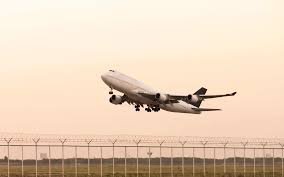Flights rerouted to Europe and North America face up to 4-hour delays as India grapples with fallout of diplomatic standoff
In the aftermath of the Pahalgam terror attack, Pakistan has unilaterally closed its airspace to Indian airlines, triggering widespread flight delays and disruptions. This decision has added up to four hours to several international flight routes, especially those connecting India with Europe and North America, and has led to substantial financial and logistical complications for airlines and travelers alike.
Delhi Airport Hit the Hardest
Indira Gandhi International Airport in Delhi, India’s busiest aviation hub, is bearing the brunt of the airspace shutdown. Flights to key destinations such as San Francisco, Chicago, and Toronto are now being rerouted over Central Asia, the Middle East, or even via Europe. Air India, IndiGo, and other carriers have been forced to make fuel stops in cities like Vienna and Copenhagen, straining operational schedules and passenger comfort.
Passenger Woes and Rising Costs
Flight times for popular routes have increased significantly. A flight from Delhi to San Francisco, which would usually take around 14 hours, now takes more than 17 hours. Passengers have reported exhaustion and missed connections, while airlines are scrambling to reorganize crew schedules and manage fuel costs.
According to industry sources, each additional hour of flight adds between $8,000 and $10,000 to operational costs. This burden could either be absorbed by airlines or passed on to passengers in the form of higher fares if the closure continues.
Airlines Respond with Emergency Measures
Air India, the most affected carrier, has begun rerouting dozens of its weekly flights and is exploring options to reduce layover durations. IndiGo and SpiceJet have issued passenger advisories, encouraging travelers to check their flight status before leaving for the airport.
Meanwhile, low-cost carriers that depend on narrow-body aircraft for long-haul services are facing the toughest challenges due to limited fuel capacity and crew endurance rules.
600+ Flights Impacted in First Week Alone
Reports from IntelliNews and NDTV confirm that over 600 flights were affected within the first five days of the closure, with about 300 departures and arrivals disrupted weekly at Delhi Airport alone.
The move also places additional pressure on Indian air traffic controllers who are now managing far more complex routing patterns to maintain flight safety and efficiency.
India Weighs Diplomatic and Aviation Options
While the Indian government has not responded directly to Pakistan’s airspace closure with retaliatory aviation measures, high-level meetings are reportedly underway to assess the impact on the aviation sector. Diplomats are also evaluating legal options under the Chicago Convention, which governs international civil aviation.
Global Reactions and Geopolitical Impact
International aviation bodies and several foreign airlines have expressed concern over the situation, urging a quick resolution to avoid large-scale disruptions across South and Central Asia. The closure is also drawing attention in Washington, London, and Brussels, where air travel to and from India remains crucial for trade and diaspora mobility.
Analysts note that if Pakistan continues to restrict its airspace, India may consider economic countermeasures or take the matter to global forums. The move could also have ripple effects on bilateral trade and regional connectivity efforts involving Central Asia and Europe.
What Lies Ahead
If the closure extends beyond a few weeks, Indian carriers may have to revise their global schedules and potentially reconsider some routes altogether. It also raises questions about the politicization of airspace access and the need for stricter multilateral rules to prevent civilian aviation from becoming a tool of diplomatic warfare.
Key Takeaway:
The closure of Pakistani airspace to Indian flights is not just a regional aviation issue—it’s a growing geopolitical flashpoint. With delays mounting and costs rising, both governments and international agencies may need to step in to safeguard global travel corridors.

